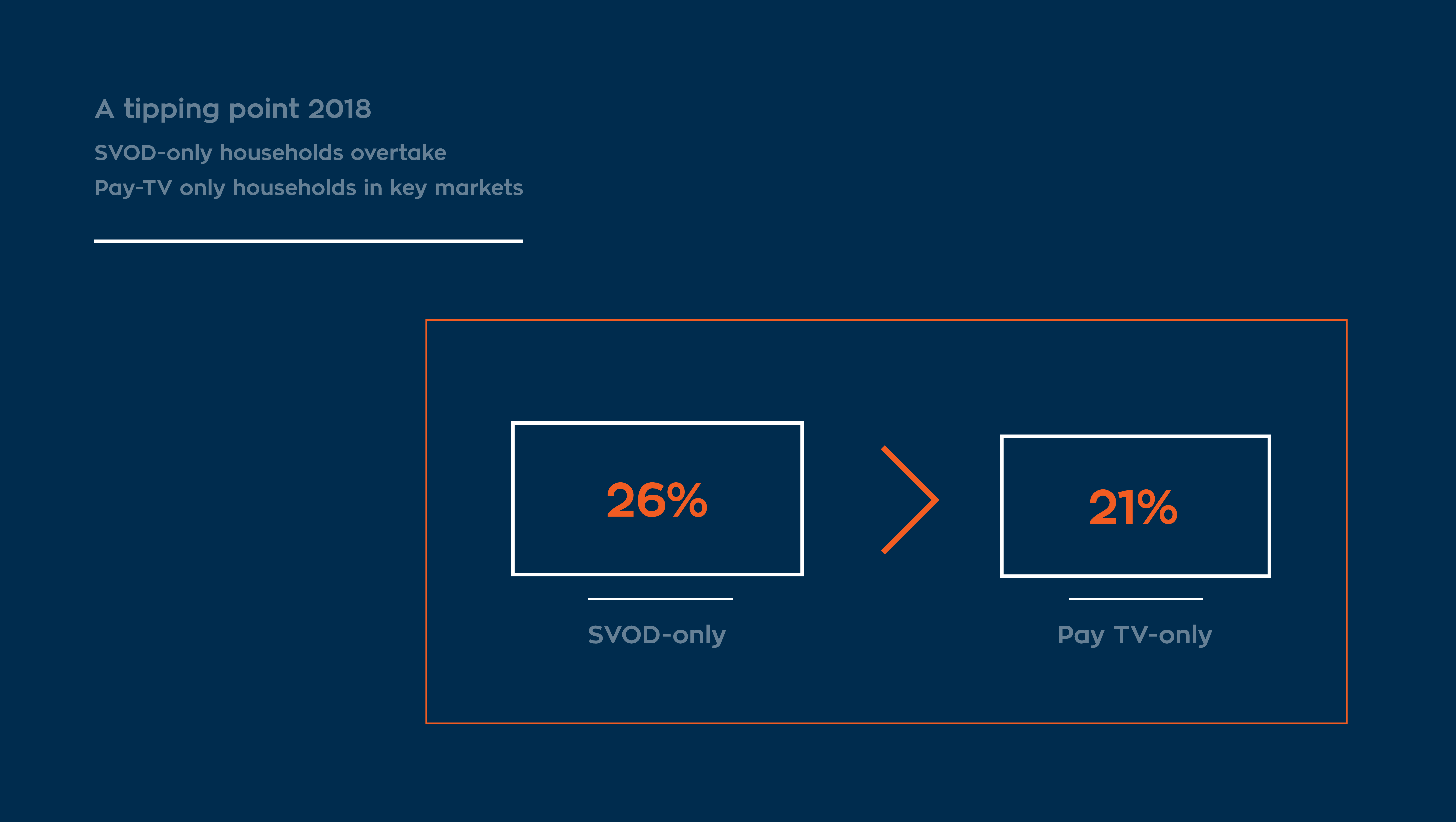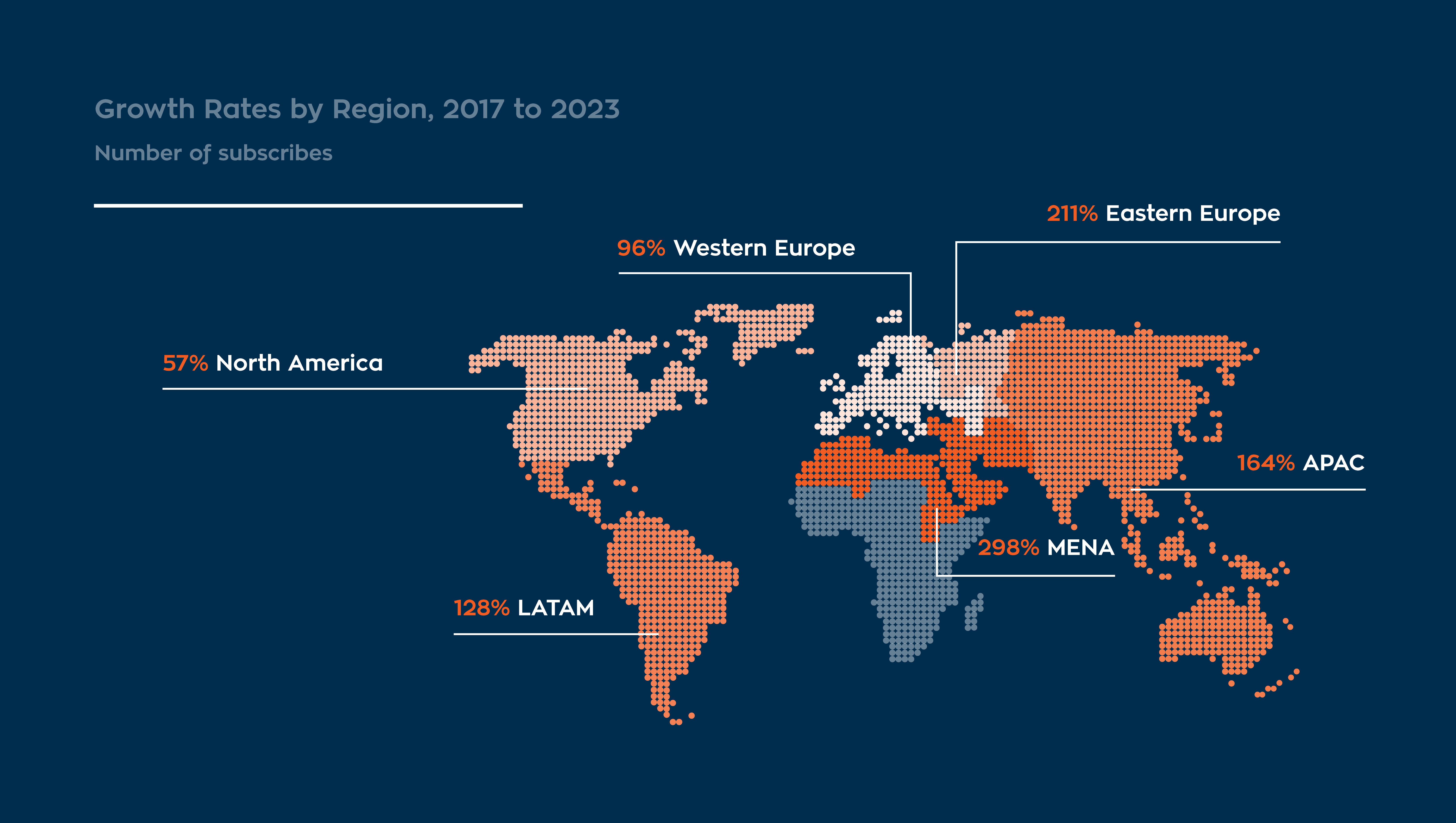Can you imagine more disturbed times in terms
of trans-generation conflux? We live in the world where some remember sharing TV
set with the whole village while the others cannot stand waiting for a video to
upload more than three seconds. For the first group carrying your beloved
content in the pocket feels like the peak of the video evolution; for the
second, however, you might hear: “Meh, why so long?!” That is the user
perspective, and is very valuable if you think of taking a direction for the
future. Moreover, no party here is possible to be found unimportant – everyone
counts in: those who still fancy clicking through the channels in the old CAS
as well as those who agilely navigate between the OTT platforms of the DRM
system.
In all this what is the providers and
operators’ perspective? They go with the flow definitely not because all of
them felt warmhearted to support their clients’ expectation, but partly due to
an occasion to loot what is shiny in this running industry disturbance. Data is
the gold of today and the CAS system falls short of the tools fit for
collecting such. Providers must still satisfy their viewers of the two worlds
while the water is unceasingly running. Can they stand up to the current any
longer?
We like doing things old-style
Next to the modern technology, Conditional
Access System (CAS) looks like a Lincoln of 70s’ – it moves us but undeniably
got started losing the races. Through this system users only get an encrypted
portion of content only when their STBs meet certain criteria. Next, those
criteria are based on hardware security which is, say, governed by a chip card.
It all works, but is unbelievably tangled after all.
As Orion Market Research says, by 2022, the CAS
coverage will have grown by 9,4% regarding the whole world, and by 2021, its share
on the TV market will have reached about $3 billion. These are not small sums.
Are the rumors about tsunami real then, if the market of what is supposed to be
gone is otherwise expanding successfully?
On the key markets the households’ proportion
of those SVOD-only to pay-tv-only says one thing – we hop through the channels
less enthusiastically. In 2018, SVOD-only households overtook pay-tv-only
households with 26% and 21% respectively on the key markets.

Source: www.ampereanalysis.com
Is it not like betting on the best horse in the race, while horses have already become outdated? The biggest struggle to sustain CAS is maintenance. Each day, teams of people fight for keeping all STBs, other hardware, certification, licenses and chip cards going… Compared to the modern technology, it does feel like combing your horse manually while the rest of the world drives Maserati repaired neatly at a workshop. For the CAS viewers it is enough for the chip card to fail to continue watching because the next step is calling the service, finding the matching daytime, and letting the men in your house. DRM, on the other hand, allows to conduct this operation within seconds. So yes, it will nudge its place around here.
DRM – where two waters meet
CAS will not die overnight obviously, and maybe
it will prolong for over many years in some regions (even those fast-changing
ones). At the end of the day, these are the viewers who dictate how they want
to watch. If the numbers are still worth fighting for, the transmission must go
on. The only question remained is how to do that effectively?
Digital Rights Management (DRM) allows for
transferring the security mechanisms to the network level which lays on the
providers side. All happens through the return path of the IP channel, which
means that no one has to be delegated into you house anymore. Thank goodness…
Two-way path of DRM leaves even more than just
quick repairment. It is all about quick reactions. The provider is enabled to
collect the data while we, the viewers, watch the content we love, and during
next episodes we face the content which suits us better. In this case, data can
be quickly analyzed and the movie production reformed. Moreover, what is our
most favorite feature, when it comes to the (born from DRM) OTT video libraries,
is when we look through them and pick movies like pralines from the box. In the
case of CAS channel surfing, it rather resembles fishing – maybe, maybe not…
With all what is good about DRM, there must be a way to combine two different systems, however. This is the place for what we might call IPification – a phenomenon when a pay-tv provider faces the need to enter OTT platforms (be it mobile apps or online streaming). They have to add the IP path to what they already have to reach their viewers’ always changing behavior. The Widevine module working on DRM finds no problem to do so and run together with the old legacy. Thanks to such solutions, when you can encrypt the playback of your content no matter the platform, you may aggregate the video from different sources. In the end, viewers get it in one user interface which is where those different CAS and DRM waters meet. The end user sees no difference and, moreover, if they still want to click through the channels, it is a matter of providing a functionality to the firmware to give it to them.

Source: Digital TV Research, Digital TV Europe,
Merging or overcoming?
DRM is without a doubt going to be the standard of how we watch video. It is entering the last of the fields it found problematic at the beginning, like: live TV or mass emissions. However, with a great success it piggybacked on the computer development to hurdle also those challenges.
The work on refining the already great user experience (like this of Netflix) still remains in progress in a few spots. Travelling high above in the sky or shooting across widespread prairies are the moments where continuous streaming might fail. Let’s then download, before the journey, the encrypted video on a device which, after a certain period, cannot play it any more. As simple as that and works, after all of us made it to come to a thought that downloading is outdated. The DRM system, above all, allows for molding its mechanics to amplify the wow of the UX.
Why not, thus, to coexist with what is the most efficient and innovative? Let's merge two encryption ecosystems! Why not to implement smart solutions for both the legacy CAS technology and the innovative DRM so that you can deliver to viewers the content they love as they love. It is definitely worth it.